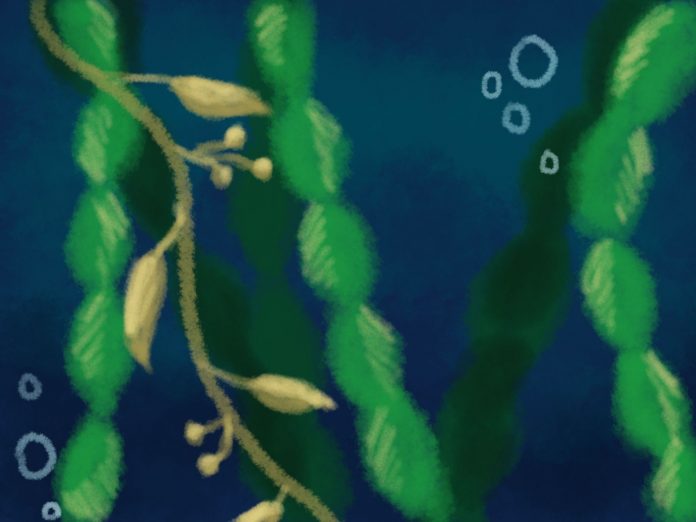Maya Rapoport
Using previous studies on kelp, a team of researchers at the University of California, Santa Barbara are developing new technology and techniques to monitor the growth of the macroalgae.
The U.S. Department of Energy’s Advanced Research Projects Agency-Energy (ARPA-E) is granting the research team, lead by director of the Earth Science Institute and Marine Biology Professor in the Department of Geography David Siegel, 2.1 million dollars over three years.
Researchers around the world believe kelp could become a substantial new source of energy. According to NPR, other countries in Asia and Scandinavia have been growing kelp as a source of food for many years and already have some of the necessary technology and infrastructure in place.
The Department of Energy’s ARPA-E Mariner program is funding many different projects to find a way to produce enough macroalgae to use as a source of biofuel. According to the ARPA-E website, growing kelp and macroalgae would create a renewable source of energy, decrease U.S. dependence on foreign oil markets, and generate more employment opportunities. In the same way that biofuel is obtained from corn, kelp could become another substantial source of biofuel for the United States.
Much of the biofuel we use today comes from crops that could be grown for food instead of energy. For example, 35% of the corn grown in the U.S. is used to produce ethanol, according to the U.S. Department of Energy.
Kelp also grows much faster and uses less fresh water than other crops. In fact, the giant kelp that grows off the coast in Santa Barbara and other parts of the West Coast can grow two or three feet per day. In an interview with The Bottom Line, Siegal said, “They want to stop using farmland [for] corn production that ends up being fuel for automobiles and replace them with another carbon source; in this case it would be kelp.”
ARPA-E is funding different teams to each focus on one specific aspect of the program. Siegel’s project, which is scheduled to begin in December, is centered around monitoring macroalgae. Using previous research, Siegel’s team wants to determine how macroalgae grows and interacts with the rest of the ecosystem.
His main goal is to find ways to use different tools and technology to better understand the way kelp grow. “My group has been working on ways to use satellite data and aircraft imagery to understand the spatial distribution, the biomass, and production of the kelp forest,” Siegel said.
By testing the technology on natural kelp ecosystems, he hopes the technology will be applicable to future man-made kelp farms. “We’re interested in how [kelp] grows, how it interacts with the environment, and how it interacts with the rest of the ecosystem.”
As part of the Santa Barbara Coastal Long Term Ecological Research Project, Siegel, and other researchers at UCSB, have been studying kelp and how it interacts with its ecosystem. “We’re taking what we have been learning for the past 15 years about the natural kelp forest and taking that to this farm environment,” said Siegel. “It’s going to push us to getting new technology in place and using robotic tools.”











